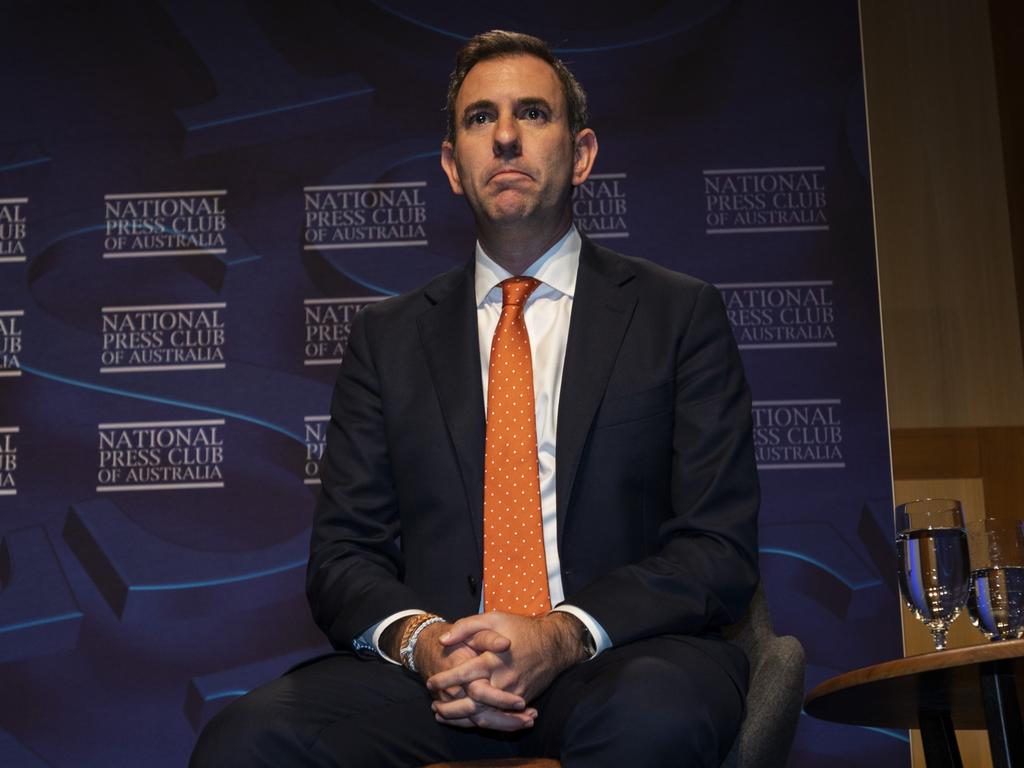Budget 2022: Buy now, pay later is going to put us in a bigger hole

American economist and social commentator Thomas Sowell once wrote: “Much of the social history of the Western world over the past three decades has involved replacing what worked with what sounded good.”
This observation similarly can apply to Australia’s recent economic history.
Despite repeated warnings of economic headwinds and the Reserve Bank of Australia increasing interest rates to dampen inflation, Jim Chalmer’s first budget was a continuation of the Coalition government’s buy now, pay later fiscal strategy.
While the RBA has been tapping the brakes, the Treasurer continued to floor the fiscal accelerator. This 2022-23 budget plans a record $644bn of spending, increasing to $729bn, or 27.1 per cent of gross domestic product, across the forward estimates. Yet despite record tax receipts, buoyed by extremely favourable terms of trade, four-year cumulative deficits of $181bn are also forecast.
Failing to heed the lessons of stagflation in the 1970s and inflation in the ’80s, Australian governments have implemented policies that have been demonstrated to inflict economic harm.
National electricity market reforms have been reversed and deformed, increasing the price of energy. Financial services and markets have been re-regulated, adding to the cost of capital. And with this budget, government spending and taxes as a proportion of GDP are at record (non-war, non-Covid) levels, thus reducing the ability of the private sector to generate wealth, create jobs and pay taxes.
Still, there is wonderment among the economic chatterati as to why productivity is slowing, economic growth is sputtering and inflation is rising.
Since releasing the budget, Chalmers has said “Inflation is the dragon we need to slay”, yet instead of fighting the dragon his government continues to feed it.
Confirmed in the budget was the key electoral program to increase funding for childcare by $4.7bn, including by subsidising families with annual incomes of up to $530,000. Confusingly, those earning $200,000 a year are too rich to get the stage three tax cuts, but families earning $530,000 a year are so in need as to require government assistance.

While presented as a scheme to reduce the cost of childcare, this policy invariably will do the opposite. At the same time as government is increasing fiscal flows to the childcare sector, it is implementing regulatory policies increasing the costs of operations for childcare service providers.
When demand stimulus collides with supply suppression, inflation generally ensues.
Such policies underlie many of Australia’s economic ills in a misunderstanding of what drives an economy.
Despite claims to the contrary, economic growth is driven by production of goods and services and not consumption. Our capacity for consumption is insatiable, but in a world of scarcity we can consume only what we produce.
In 1803, French economist Jean-Baptiste Say noted that production creates demand – the more we can produce, the more we can buy. Despite the simplicity of this logic, an economic myth has been perpetuated that it is not production and productivity but instead government, through fiscal and monetary stimulus, that grows an economy. However, the government providing fiscal stimulus to one group requires suppressing another group, by taxing today or taxing tomorrow.
The only pathway to economic prosperity is to optimise the conditions for production.
Optimised production conditions does not mean no regulation or taxes or government spending. It just means there is a trade-off.
If Australia wants to have high taxes, a large amount of government spending and reams of regulation, we should not expect high economic growth and accordingly should live within such means. Trying to stimulate economic prosperity through debt-fuelled spending while making it harder to produce will deliver only inflation, as we are experiencing. There is no free lunch.
This is not just an Australian phenomenon. Global debt sits at about $475 trillion. Every 1 per cent increase in interest rates increases the costs to service this debt by $5 trillion a year. That’s another $5 trillion that must be extracted from the productive economy or from future generations to just stand still.
Meanwhile, the RBA already has increased interest rates by 2.5 per cent and the US Federal Reserve by 3 per cent, with more increases signalled.
For the federal government to forecast that Australia will remain an island of prosperity floating carefree in an ocean of economic turbulence requires a degree of wishful thinking along the lines of claims that we are experiencing transitory inflation.
Australian governments need to re-embrace the Hawke-Keating and early Howard reform zeal through supply-side economic reform. Reduce regulation. Reduce taxes. Reduce government spending. Attempts to address cost-of-living pressures by increasing government spending or by further government intervention in markets will achieve what Sowell also observed: “Politicians can solve almost any problem – usually by creating a bigger problem.”
Dimitri Burshtein is a former government policy analyst.





The gods of fiscal rectitude would have nodded at the schadenfreude. The day after the federal government released its budget, inflation hit a 32-year high, increasing by 1.8 per cent to 7.3 per cent. Perhaps a gentle reminder to governments and their econocrat advisers that inflation is determined by market dynamics and not spreadsheet models.